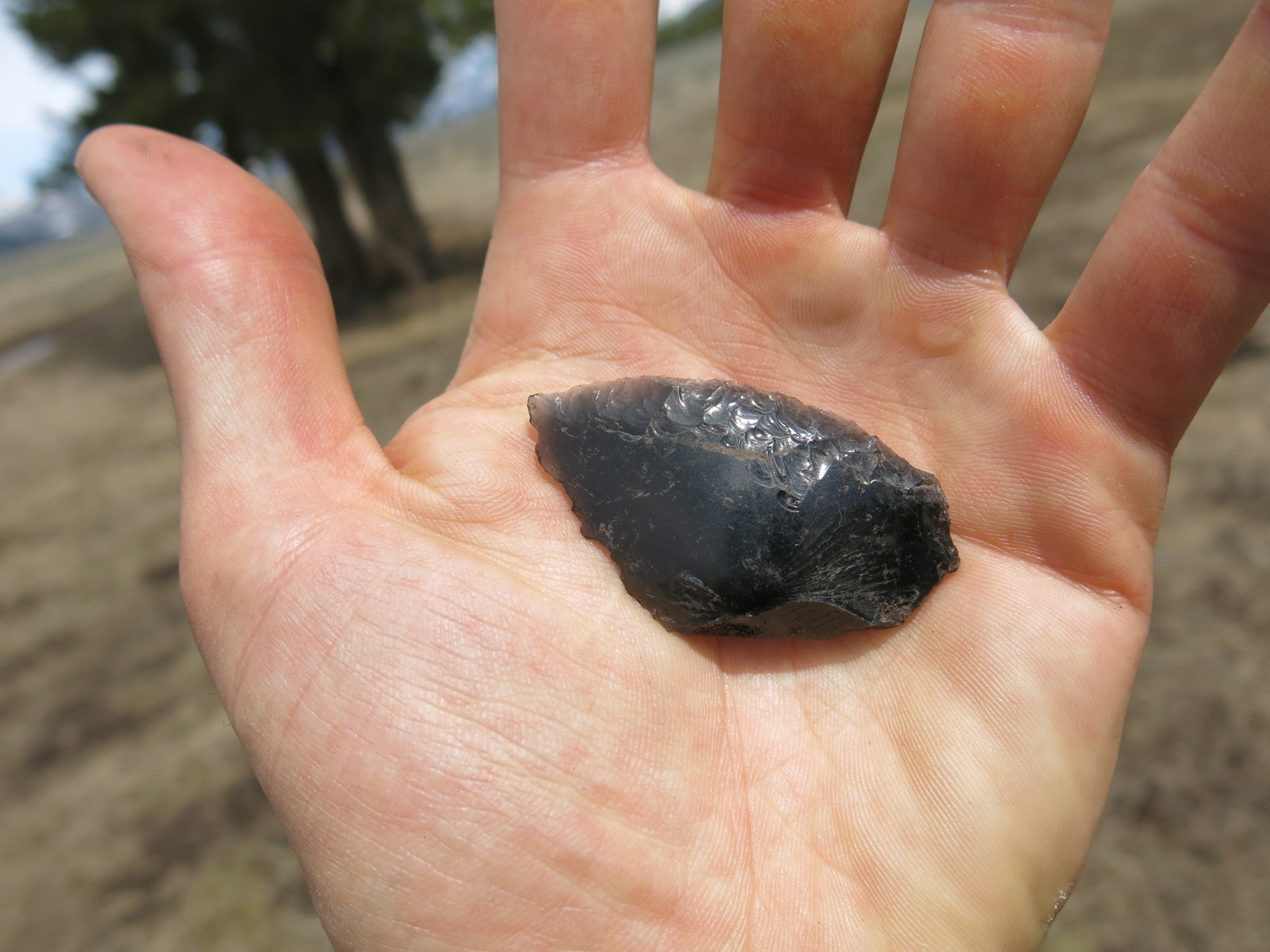Obsidian in Yellowstone used to make arrowheads and carving tools was a valuable trade item that reached dozens of tribes. This point speaks to its reason for existing: available wildlife killed for food. The contested land that was once shard by both Yellowstone and the Crow Reservation in the vicinity of upper Slough Creek includes highly productive big game habitat—and would've been valuable to hunting culture. This obsidian scraper was photographed by Burritt in 2014. Today, he notes, moose, a herd of bison, and elk can be found wintering in upper Slough Creek, accompanied by diverse predator species.

